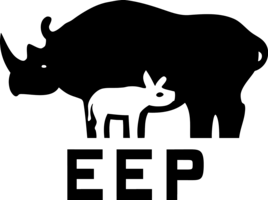Sumatran Orangutan
Pongo abelii
![[Translate to English:] [Translate to English:]](/fileadmin/_processed_/4/b/csm_orang-utan-tierpark-hellabrunn-welt-der-affen-tierlexikon-_80bc979a1b.jpg)
- FamilyGreat apes (Hominidae)
- Weight♀ 30 – 50 kg, ♂ 50 – 90 kg
- HabitatTropical rainforests
Man of the forest
The orangutan derives its name from the Malay words “orang” (person) and “hutan” (forest).The orangutan is a great ape just like humans, and the largest tree-dwelling mammal in the world. Males and females are easily distinguished by size and appearance. Mature males are significantly larger than females and have cheek pads called flanges, which are thought to amplify their calls in the same way as a megaphone.

School of mum
Orangutans are the only apes without a fi xed group structure. Their societies are made up of resident and transient individuals of both sexes. The resident male’s territory often includes the territories of several females. He acquires the right to mate by defending the females against transient males. Females give birth to a single young or rarely twins, after a gestation period of about eight months. The mum will pass on all her knowledge to her infant, including tips on foraging and socialising.
Sumatran orangutans love eating fruits, especially those with larger seeds, and play a vital role in seed dispersal. Without the orangutan, some of these tree species would disappear.
Distribution


Hellabrunn Zoo participates in the European Endangered Species Programmes